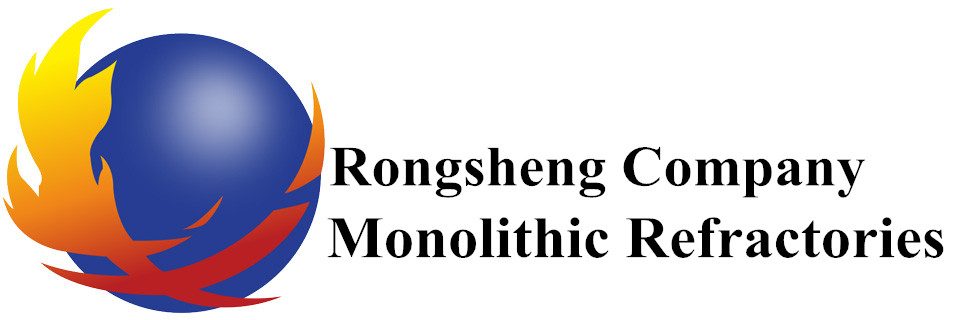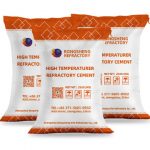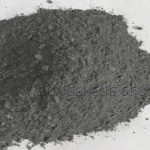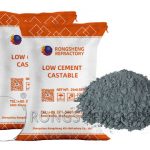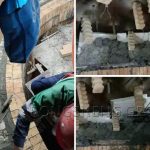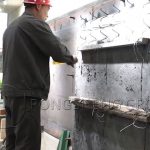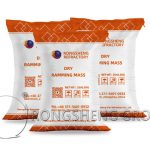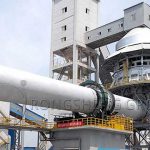Refractory cement refers to cement with refractoriness not less than 1580°C. Refractory cement is made of high-quality bauxite and high-quality lime as raw materials, mixed in a certain proportion into raw materials with appropriate components, and after sintering, the clinker with aluminate as the main component is obtained. It is ground into fine powder to make a hydraulic cementitious material with fire resistance. According to different compositions, refractory cement for sale can be divided into aluminate refractory cement, low calcium aluminate refractory cement, calcium magnesium aluminate cement, and dolomite refractory cement. Refractory cement can be used to cement various refractory aggregates (such as corundum, calcined high alumina bauxite, etc.) to make refractory mortar or concrete, which is used as lining in cement rotary kilns and other industrial kilns.
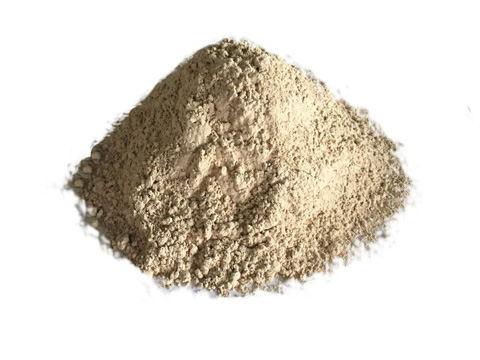
The Difference between Aluminate Refractory Cement and Calcium Magnesium Aluminate Cement
Aluminate refractory cement. Where high-quality bauxite and high-quality white limestone are used as raw materials, they are combined into a raw meal of appropriate composition in a certain proportion. After sintering, the obtained clinker with aluminate as the main component is ground into fine powder to produce a fire-resistant hydraulic cementitious material called aluminate refractory cement.
Calcium magnesium aluminate cement is a kind of aluminate cement made by mixing high-quality bauxite and dolomite in proper proportion, sintering, and grinding. The composition of calcium magnesium aluminate cement is generally 66% to 74% of alumina, 13% to 18% of calcium oxide, 10% to 13% of magnesium oxide, and trace amounts of silicon dioxide and iron oxide. The mineral composition consists of calcium aluminate and calcium dialuminate accounting for 45%-60%, and spinel accounting for 35%-50%. The refractoriness is above 1650℃.
Aluminate cement is a special kind of cement, and it is also called in many ways. For example, refractory cement, 625 cement, high alumina cement, CA-50 cement, etc. It has a wide range of applications. In many refractories concretes, aluminate cement is an indispensable refractory binder. The use temperature of aluminate cement can reach 1350℃. If it is mixed with high alumina aggregate and other refractory materials to form refractory castables, the refractory temperature can reach 1700℃. Aluminate cement can be divided into CA-50 and CA-70 (also called calcium aluminate cement, white in color) according to the aluminum content. It is a hydraulic cementing material with fast hardening, early strength, corrosion resistance, and high-temperature resistance. Aluminate cement has yellowish-brown and gray. It has a wide range of applications in metallurgy, machinery, building materials, petrochemical, electric power, food, and other industries.
Matters Needing Attention When Baking Refractory Cement Lining
- (1) The 350℃ stage at room temperature is most likely to cause local bursts. Pay special attention to slow baking. If there is still a lot of steam coming out after heat preservation at 350°C, the temperature rise rate should still be slowed down.
- (2) Under the conditions of poor ventilation and difficulty to discharge water vapor, the heat preservation time should be extended appropriately.
- (3) When baking with heavy oil, it is necessary to prevent heavy oil from spraying on the surface of the furnace lining to prevent local bursting.
- (4) When using firewood to bake, direct contact with the flame will often cause local heating up too quickly, which should be protected.
- (5) For newly poured refractory cement, it can be baked at least 3 days later.
- (6) The refractory cement lining should also be cooled slowly to avoid forced ventilation.
Technical Requirements for Refractory Cement
- (1) Fineness of refractory cement. The finer the cement particles, the larger the specific surface area, the faster and more fully the hydration reaction, and the higher the early and late strength. According to national regulations, the specific surface area should be greater than 300 square meters per kilogram, otherwise, it is unqualified.
- (2) Setting time of refractory cement. In order to ensure sufficient time during construction to complete various processes such as mixing, transportation, and molding, the initial setting time of cement should not be too short. After the construction is completed, it is hoped that the cement can harden as soon as possible to produce strength, so the final setting time should not be too long. The initial setting time of refractory cement shall not be earlier than 45 minutes, and the final setting time shall not be later than 390 minutes.
- (3) Stability of refractory cement body. The uniformity of the volume change of the cement paste during the setting and hardening process is called the volume stability of the cement. If the volume changes unevenly, that is, the volume stability is poor, it is prone to warping and cracking, reducing the quality of the project or even accidents.
Buy High-Quality Refractory Cement from the Manufacturer
Rongsheng monolithic refractory material manufacturer has an environmentally friendly, advanced, and fully automatic unshaped refractory production line with an annual output of 80,000 tons. Rongsheng refractory manufacturers have rich experience in the production and sales of refractories. Rongsheng refractory manufacturers have customers in more than 60 countries all over the world, for example, South Africa, the Philippines, Chile, Malaysia, Indonesia, Vietnam, Kuwait, Turkey, Zambia, Peru, Mexico, Qatar, Egypt, Russia, Kazakhstan, etc. Many of our customers continue to return orders. Buy high-quality refractory cement for sale Philippines. please contact us. The sales service of refractory manufacturers will not let you down.
